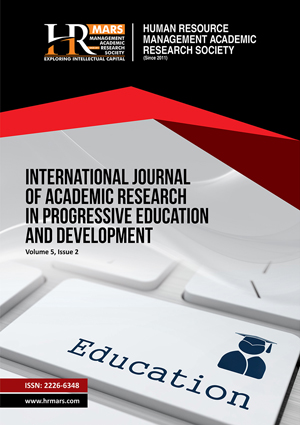
ISSN: 2226-6348
Open access
This study aims to develop, validate the content, and establish the reliability of the Body Dysmorphic Disorder Inventory (IKDT-8). This questionnaire is designed to measure the level of Body Dysmorphic Disorder (BDD) in individuals. The construction of IKDT-8 is based on the criteria from the Diagnostic and Statistical Manual of Mental Disorders (DSM), 5th Edition by the American Psychiatric Association (APA). IKDT-8 comprises 8 items divided into 4 subscales, with each subscale containing 2 items. The subscales include: 1) Obsessive thoughts about appearance, 2) Repetitive behaviors or mental actions due to concerns about appearance, 3) Impairment of social functioning and daily activities, and 4) This disorder is not better explained by other mental disorders such as eating disorders. To validate its content, IKDT-8 was reviewed by 7 experts consisting of 4 field specialists and 3 academic lecturers. Forty-five respondents aged 18 to 25 were selected to determine its reliability. The overall validity of IKDT-8 shows a high value of 0.946 (94.6%), and the reliability value was also high at 0.851. Thus, this study successfully developed a questionnaire with good validity and reliability for use in the counseling field in Malaysia.
American Psychiatric Association. (2013). Diagnostic and statistical manual of mental disorders (5th ed.).
Brohede, S., Wingren, G., Wijma, B., & Wijma, K. (2013). Prevalence of body dysmorphic disorder among Swedish women: A population-based study. Comprehensive Psychiatry, 54(4), 428–434.
Davies, B., Turner, M., & Young, K. (2020). The impact of social media on body image concerns in young people: A systematic review. Youth Studies Australia, 39(2), 58–69.
Feusner, J. D., Neziroglu, F., Wilhelm, S., Mancusi, L., & Bohon, C. (2010). What causes BDD? What can we learn from neuroimaging studies? CNS Spectrums, 15(8), 466–474.
Ferguson, C. J. (2013). In the eye of the beholder: Thin-ideal media affects some, but not most, viewers in a meta-analytic review of body dissatisfaction in women and men. Psychology of Popular Media Culture, 2(1), 20–37.
Hanafiah, A. N., & Van Bortel, T. (2015). A qualitative exploration of the perspectives of mental health professionals on stigma and discrimination of mental illness in Malaysia. International Journal of Mental Health Systems, 9(1), 10.
Koran, L. M., Abujaoude, E., Large, M. D., & Serpe, R. T. (2008). The prevalence of body dysmorphic disorder in the United States adult population. CNS Spectrums, 13(4), 316–322.
Phillips, K. A., & Bjornsson, A. S. (2010). Biological aspects of body dysmorphic disorder. Psychiatric Clinics, 33(3), 353–373.
Phillips, K. A., Didie, E. R., Menard, W., Pagano, M. E., Fay, C., & Weisberg, R. (2006). Clinical features of body dysmorphic disorder in adolescents and adults. Psychiatry Research, 141(3), 305–314.
Phillips, K. A., Wilhelm, S., & Koran, L. M. (2002). Body dysmorphic disorder: Some key issues for DSM-V. Depression and Anxiety, 16(2), 55–58.
Phillips, K. A., & Menard, W. (2017). The broken mirror: Understanding and treating body dysmorphic disorder. Oxford University Press.
Schneider, S. C., Turner, C. M., Mond, J., & Hudson, J. L. (2018). Prevalence and correlates of body dysmorphic disorder in a community sample of adolescents. Australian & New Zealand Journal of Psychiatry, 52(12), 1139–1148.
Subramaniam, M., Abdin, E., Vaingankar, J. A., & Chong, S. A. (2020). Body dysmorphic disorder in Asia: Findings from a Singapore mental health survey. Journal of Psychiatric Research, 125, 132–139.
Swami, V., & Chamorro-Premuzic, T. (2008). Factor structure of the Body Appreciation Scale among Malaysian women. Body Image, 5(4), 409–413.
Veale, D., & Neziroglu, F. (2010). Body dysmorphic disorder: A treatment manual. John Wiley & Sons.
Veale, D., Gledhill, L. J., Christodoulou, P., & Hodsoll, J. (2016). Body dysmorphic disorder in different settings: A systematic review and estimated prevalence. Psychology and Psychotherapy: Theory, Research and Practice, 89(1), 1–29.
Wilhelm, S., Phillips, K. A., & Steketee, G. (2011). Cognitive-behavioral therapy for body dysmorphic disorder: A treatment manual. Guilford Press.
Amin, N. F. M., Hassan, W. I. M. W., & Arip, M. A. S. M. (2025). Development and Psychometric Evaluation of a Malay Version of Body Dysmorphic Disorder Inventory (IKDT-8) among Malaysian Youth. International Journal of Academic Research in Progressive Education and Development, 14(1), 1083–1094.
Copyright: © 2025 The Author(s)
Published by HRMARS (www.hrmars.com)
This article is published under the Creative Commons Attribution (CC BY 4.0) license. Anyone may reproduce, distribute, translate and create derivative works of this article (for both commercial and non-commercial purposes), subject to full attribution to the original publication and authors. The full terms of this license may be seen at: http://creativecommons.org/licences/by/4.0/legalcode